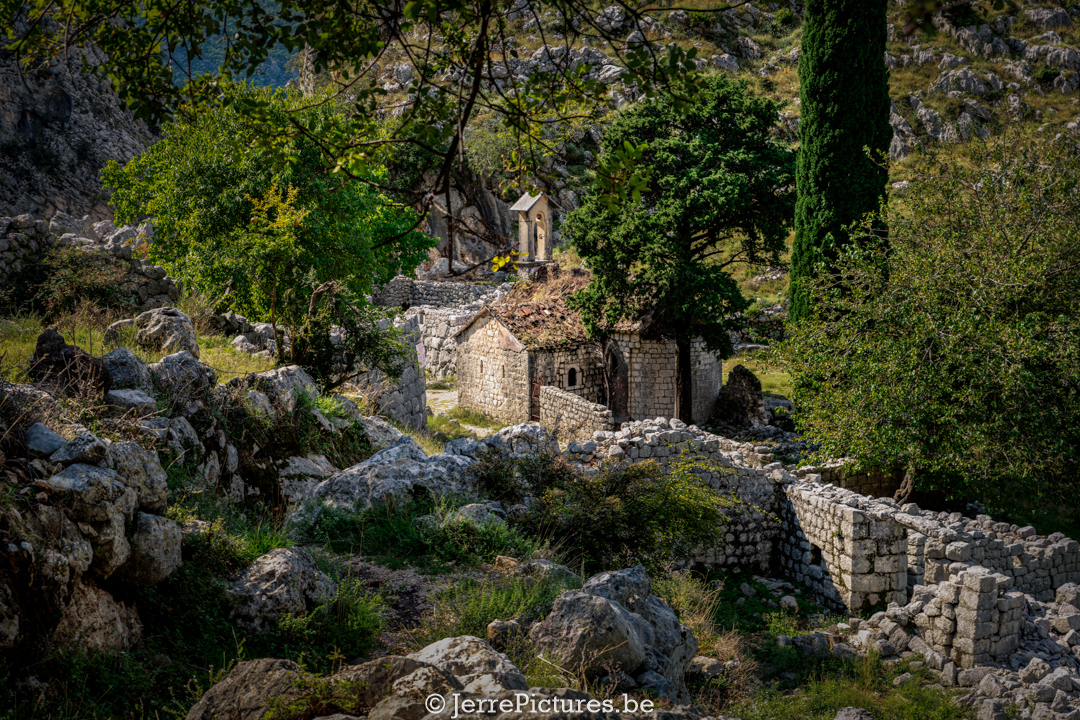 There are two ways to get to Kotor Fortress.
There are two ways to get to Kotor Fortress.
There is the official way, and there is the unofficial way (which is the way nobody online seems to cover).
I will tell you both, and then I will explain why the unofficial way is the best option.
Hiking up to Kotor Fortress is definitely one of the main things to do in Kotor, you will be rewarded with a magnificent view over the red-roofed houses of Kotor’s Old Town and the fjord-like bay nestled in the mountains is something you don’t want to miss if you visit Kotor.
In fact, it’s probably the most photographed spot in all of Montenegro – and it’s no wonder! – but what the Instagram posts mostly don’t tell you, is how to get there, or what’s behind the camera!
So, now that we’ve got that info out of the way, let’s get to the juice: hiking in Kotor and how the heck to get to Kotor Fortress!
The Official Route to Kotor Fortress
The vast majority of people that hike to Kotor Fortress walk up the 1355 steps up to it. The entrance to these stairs is found within the walls of the Old Town. When you get about a third of the way up, there is a man with a turnstile who will charge you 8 EUR to continue up to the fortress. The cost used to be 3 EUR, but thanks to over-tourism (and the influence of Dubrovnik), it is now 8. But no clue where the money goes to….
The stairs are not the easiest to climb, with some of the steps being very loose (and slippy!), and the stairs themselves are incredibly narrow, with loose rocks to the side that you will have to walk on if somebody else is walking up/down at the same time as you. They are also fairly steep in parts, making it a rather tiring walk.
The Unofficial/Adventurous Route to Kotor Fortress (Free Road)
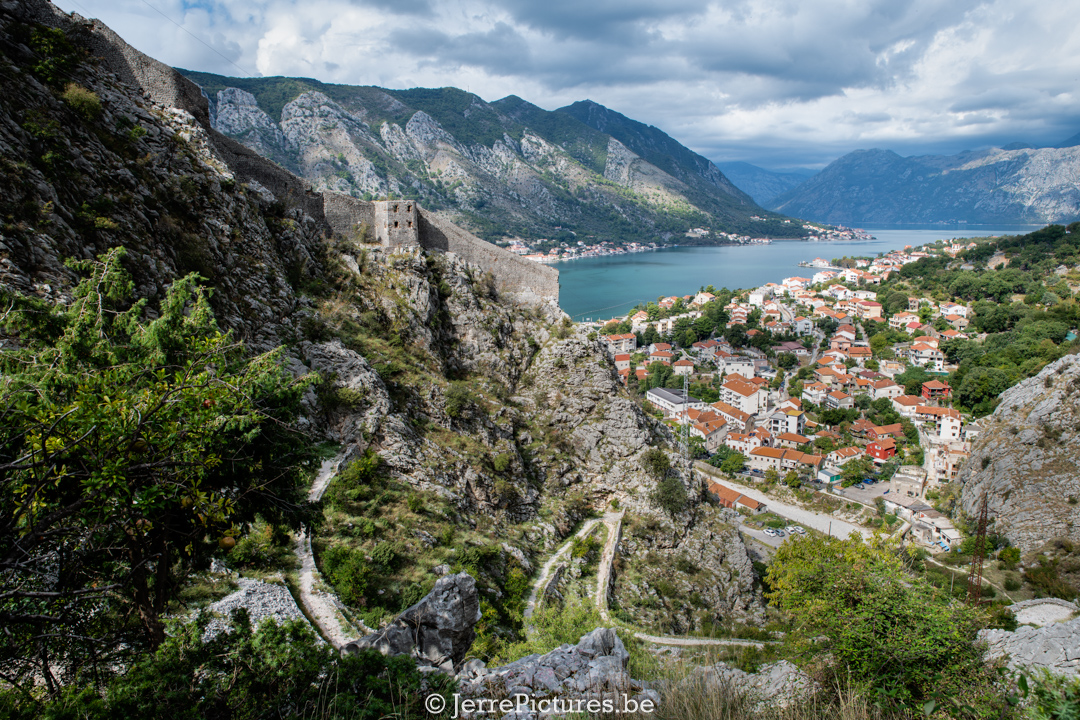
Download the GPX file for this road for free
However, there is an alternative route that requires a bit more effort due to the distance. But if you’re the adventurous type, this route to Kotor Fort is definitely worth it. There are beautiful photos to be taken from this viewpoint overlooking the Bay of Kotor, or Boka Bay.
If you want to avoid the crowds, it’s best to park your car at the paid parking lot by the water. It costs a bit, but it will make your visit to Kotor much easier, and you’ll also be supporting the local community.
The route starts at the North Gate of the Old Town. Cross the bridge (don’t forget to take a picture of the beautiful view!) and turn right. You’ll see the mountain you’re going to climb. As you get closer, the zigzagging path that winds its way up becomes visible. This path, known as the Kotor Ladder, connects the old capital city of Cetinje with Kotor. In the past, local women used the path to bring their goods to the market in the old town of Kotor!
Taking this route is easier than the stairs because the slope is very gentle. Plus, the view along the way is much more varied.
Along the way, you’ll pass two inhabited houses where you can order a drink. At first glance, it may seem like no one lives there, as the chairs have no seats or backrests, and everything is overgrown. But don’t be fooled, there is still someone living there.
The 2nd house is slightly better and the man there is often on the lookout with his binoculars with his Stafford who is super playful. However, it is firmly attached to a steel cable that spans an area over the rocks. Remember the dogs here often have a different meaning than we know them they are really working forces that guard and protect the sheep/goats from bears and wolves. these dogs will stop at nothing! Sometimes the animals look unkempt. but they are very loyal to their boss and get the best food their boss can afford.
After about 25 minutes, you will reach an old chapel. This is the Chapel of St. George (Sveti Dorde) and is around 1000 years old! The chapel is open so you are free to go inside, but it hasn’t been well preserved. Nevertheless, it is interesting to peep inside, and also gives you the chance to have a rest!
The chapel stands out beautifully in the landscape
If you’re in the mood for a little tipple at this point then you can turn left at the chapel and follow the handwritten signs to the Rakija Man’s house. I don’t know what his real name is, or what his little business is called, but for all intents and purposes, he is the Rakija Man. This man lives up the mountain and makes his own rakija and goats’ cheese, and he welcomes weary travelers with open arms to sample his produce. Unfortunately, the first time I hiked to the fortress, I didn’t know about the Rakija Man, and the second time was low season and he wasn’t around! However, I have it on good authority that he does exist, he does have rakija and he does have cheese.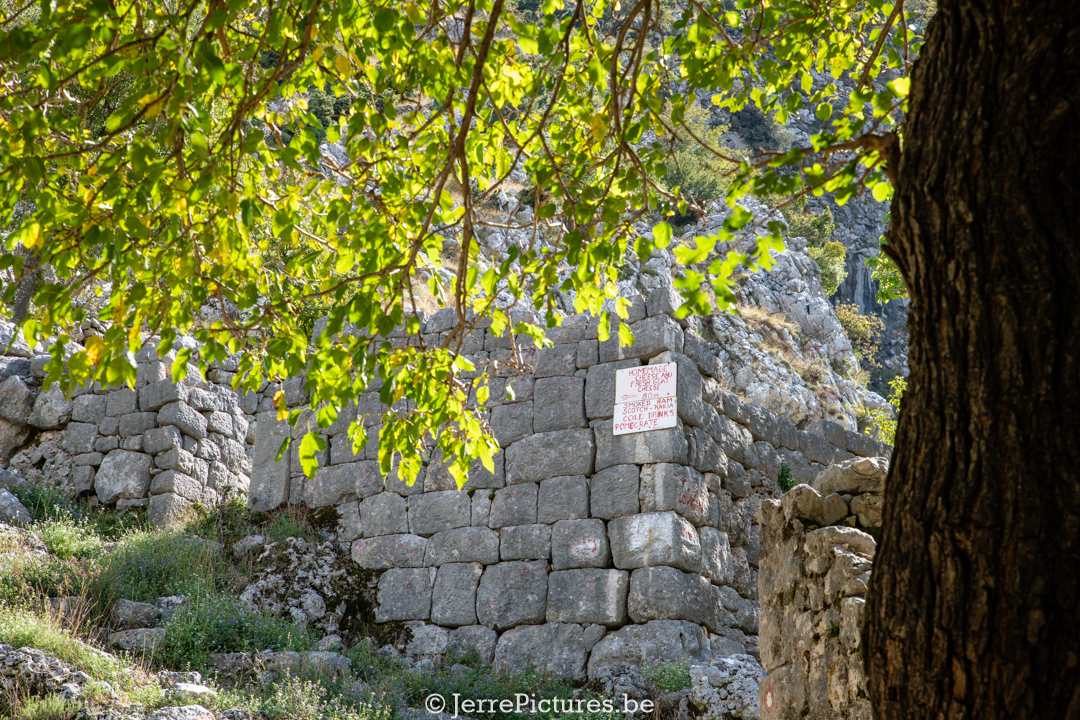 . (there are a lot of good reviews for the cheese he sells!!)
. (there are a lot of good reviews for the cheese he sells!!)
Visiting the Rakija Man is not only a great way of sampling local produce, but it’s also great to support small businesses and the couple of euros that you pay to the Rakija Man in exchange for some rakija and cheese directly benefit him and his family!
After you’ve visited Rakija Man, head back to the chapel and continue your journey because you’re nearly there!
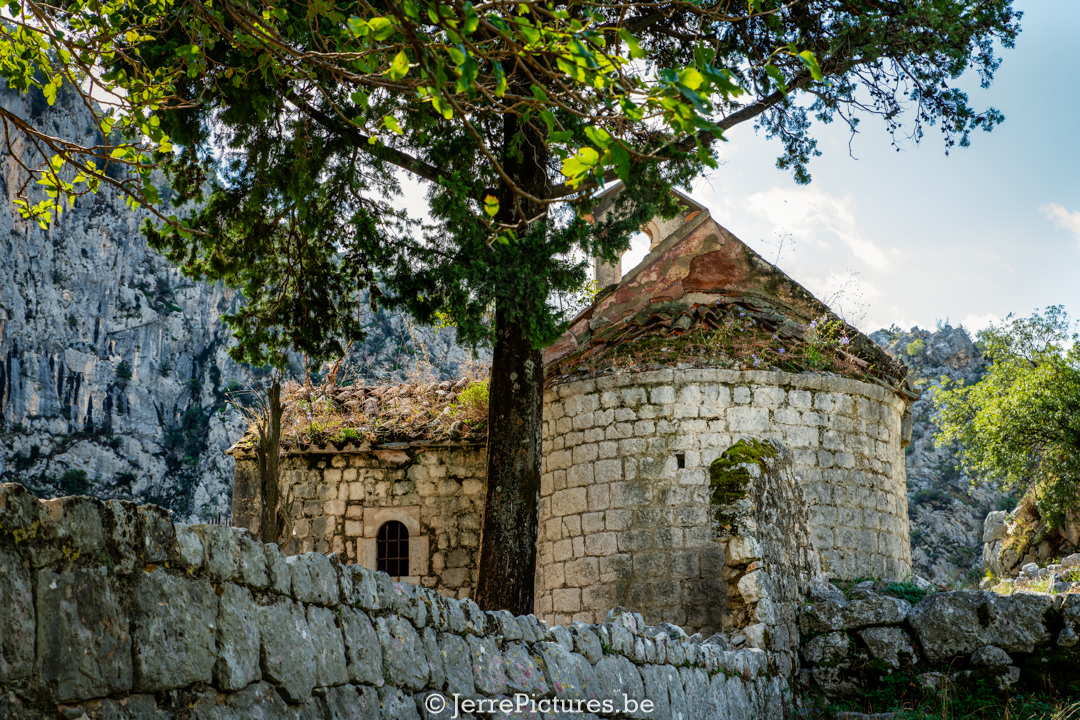
From the church, bear right and follow the path. There will be a wall on your left and the grassy plains of the mountain will be on your right (there are some arrows painted on the trees to help you out!). You may even see the local donkey or cow wandering around!
Continue on this path for a couple of minutes and you will come to a window that you can climb through (it looks a bit shaky, but it is certainly doable ) Once you climb through the window, you will be on the ‘official’ route, having bypassed the man asking for money, and so you can just follow the steps up until you reach Kotor Fortress!
Why Take the Unofficial Route to Kotor Fortress?
Some would say because it is free, but hey this is not fair in order to save these walls
I would say because it is more beautiful and more adventurous and a lot more scenic than the official way.
but as someone said, 8 EUR is an extortionate price, especially as the price was just 3 EUR back in 2017. The prices of everything in Kotor are quickly rising due to the huge number of cruise ships that descend on the city every day. Due to this, the residents of Kotor have seen a sharp increase in the cost of living, but not in wages. Unfortunately, many locals just cannot afford to live in Kotor anymore, which is just one of the heartbreaking effects of over-tourism, and although it isn’t exactly the residents of Kotor that are climbing to the fortress, I still believe that we should take a stand against such unreasonable price increases because otherwise, this will just continue.
In my personal opinion, the best way to hike to Kotor Fortress is to walk UP the unofficial way and head DOWN via the stairs. This means that your journey down will be a lot quicker, and you will have a chance to see what you missed (the 1518 Church of Our Lady of Remedy midway down!).
When you see the man with his turnstile halfway down, don’t panic: he won’t charge you.
The best time to visit Kotor Fortress
this really depends on when you go. In low season, it’s cool enough to walk up in the middle of the afternoon and there won’t be hordes of crowds all clamoring for a picture at the top. In high season, you should go early in the morning (the ticket man starts work at 8 am so you can climb the stairs for free before then!) to watch the sunrise, or late in the afternoon to avoid being too hot.
It’s especially nice to hike up to the fortress in the late afternoon because not only can you avoid the heat, but this is the time when many backpackers gather at the top with cold beers and snacks, and it’s a really nice atmosphere. However, don’t be fooled into thinking that you can watch the sunset from Kotor Fortress – all it does is disappear behind the mountain!
Hiking in Kotor – What to Wear
You don’t need hiking boots to walk to Kotor Fortress but it is wise to wear comfortable shoes that won’t slip off easily as the path can be rocky and uneven.
Clothing-wise, wear something light and make sure you are wearing sunscreen because the rays can get really intense up there! You should also make sure to carry lots of water!! At least 1.5L per capita.
(Pro tip: in high season, there is a guy selling cold drinks at Kotor Fortress, but like you guessed they are very overpriced and kept cold in the fridge box, so these are after some time not really cold anymore.
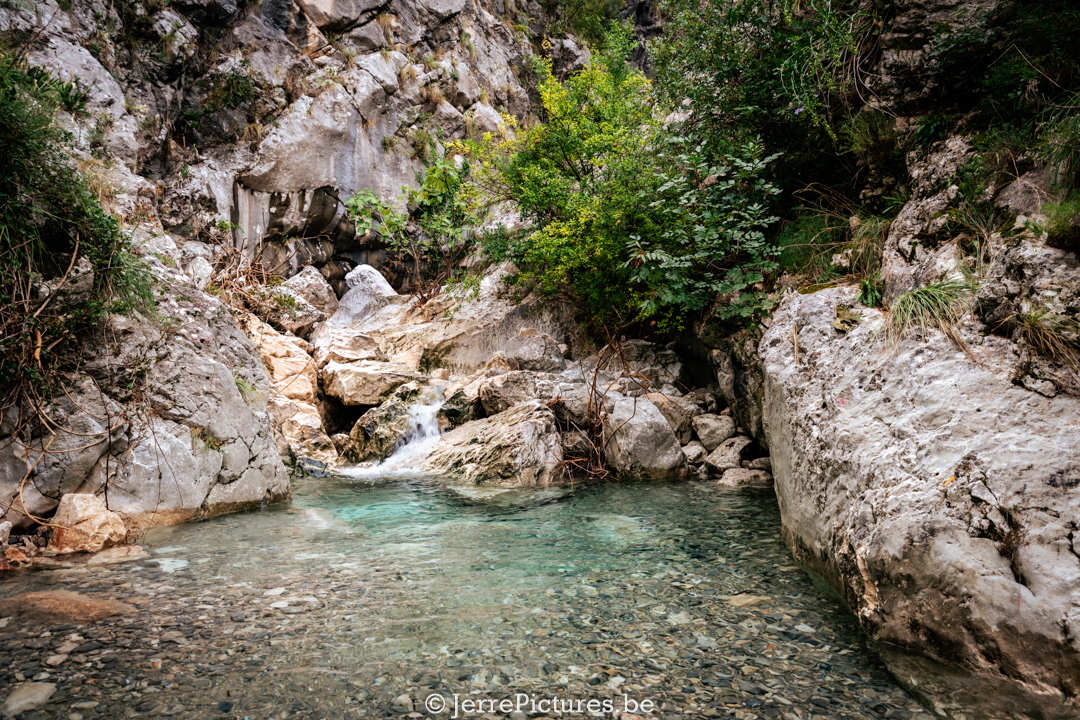
Pro tip:
Before turning right on the little bridge over the river. keep walking straight for a while…. and discover some hidden little waterfalls
Nerdy deep dive in to Kotor Fortress
Fortifications of Kotor
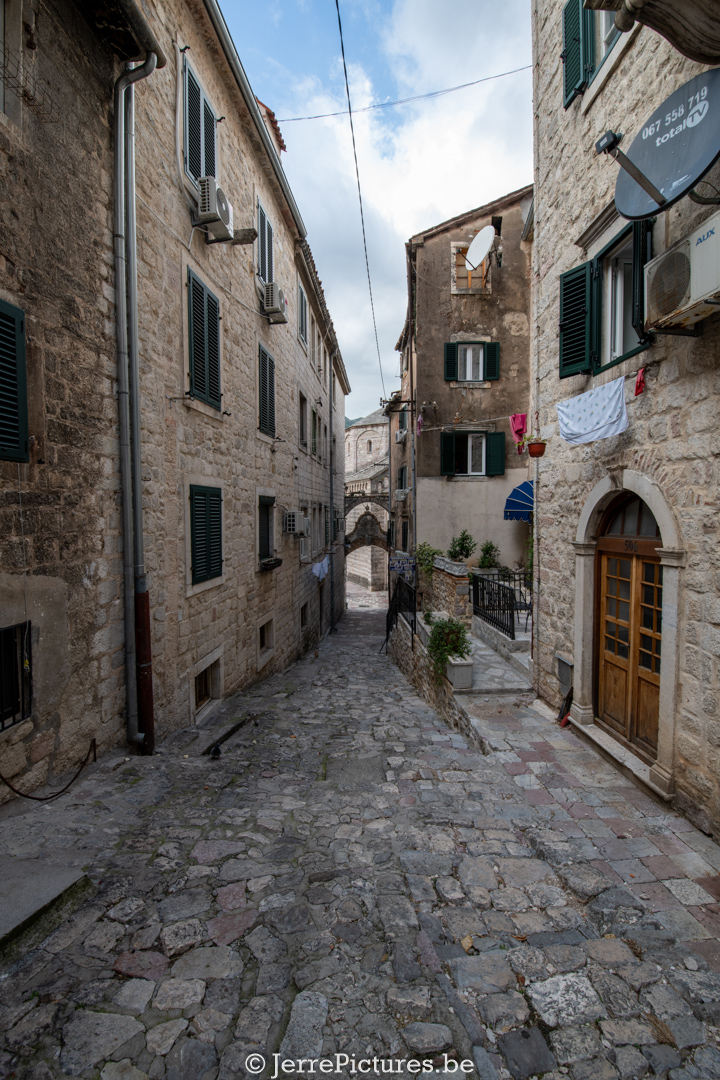
At the foot of the hill San Giovanni, surrounded by underwater spring Gurdić by one side, and the river Skurda on the other – lies the Kotor town. Kotor is a typical example of a Mediterranean city with a very turbulent history including wars, sieges, intrigues, and even earthquakes.
Here you can walk true picturesque serpentine streets, old squares, houses with red roofs, churches, and bell towers, it could be right out of ‘Assassins Creed’ you will smell the wild oranges and lemon zest from the gardens by the road. Natives are more family-oriented during the winter period, and during the summer season, they are preoccupied with tourists.
Walls of Kotor
The walls of Kotor stretch around the city and the San Giovanni hill. These walls were built to protect the city but were overcome by enemies several times. In history, Kotor was an important maritime, economic, and trading center. The powerful walls of Kotor are more than 4.5 km long and follow the triangular shape of the city and the hill.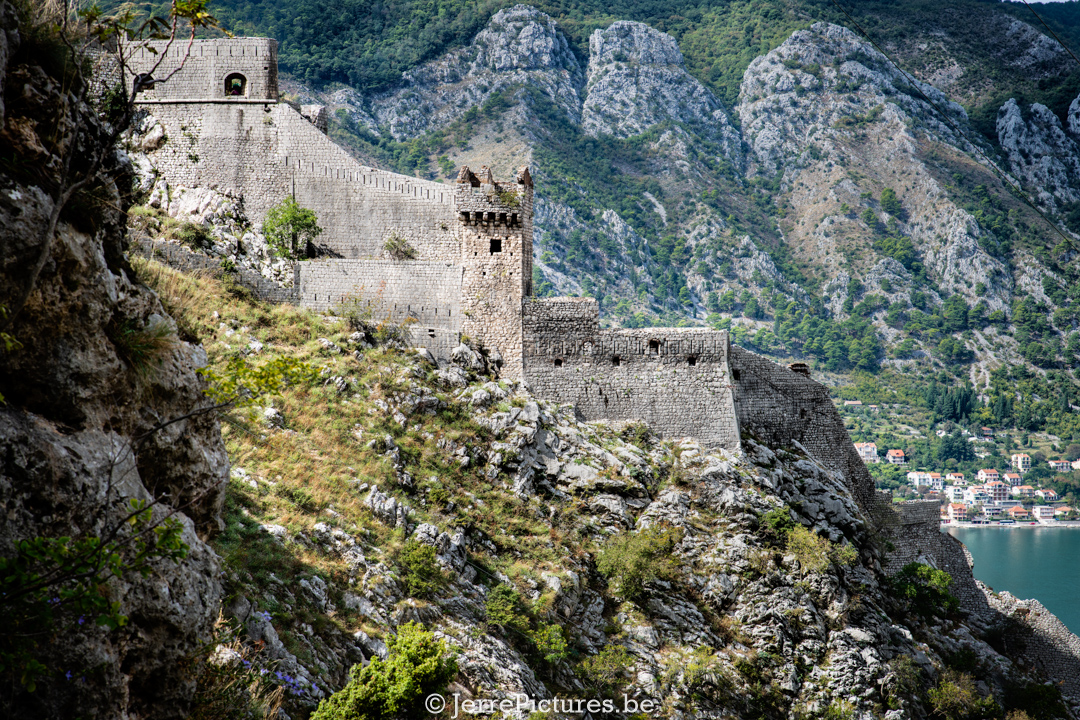
Brief history:
The top of the mountain of St John was already fortified during the Illyrian times, but in the 6th century, Emperor Justinian 1 reconstructed the fortress. The Republic of Cattaro (as it was then called) was independent for a while. But eventually, in 1420 it succumbed to Venetian rule. It was then, as part of Albania Venetia, that the fortifications received their current structure.
However, it hasn’t exactly been plain sailing for the fortifications of Kotor since then. In the past 500 years, three powerful earthquakes have rocked the city, the most recent being in 1979, damaging much of Kotor. After rehabilitation, you can still see where the Illyrians, Byzantines, and Austrians have left their mark, but most of the remaining fortifications are Venetian.
Most remarkable battle: The fortifications of the city were attacked by the British naval Captain William Hoste with his ship HMS Bacchante (38 guns). In an “unmilitary manner,” he hauled his ships’ cannons to positions above the fort using block and tackle and started the shelling. After a ten-day siege, the French garrison had no alternative and surrendered on 5 January 1814.
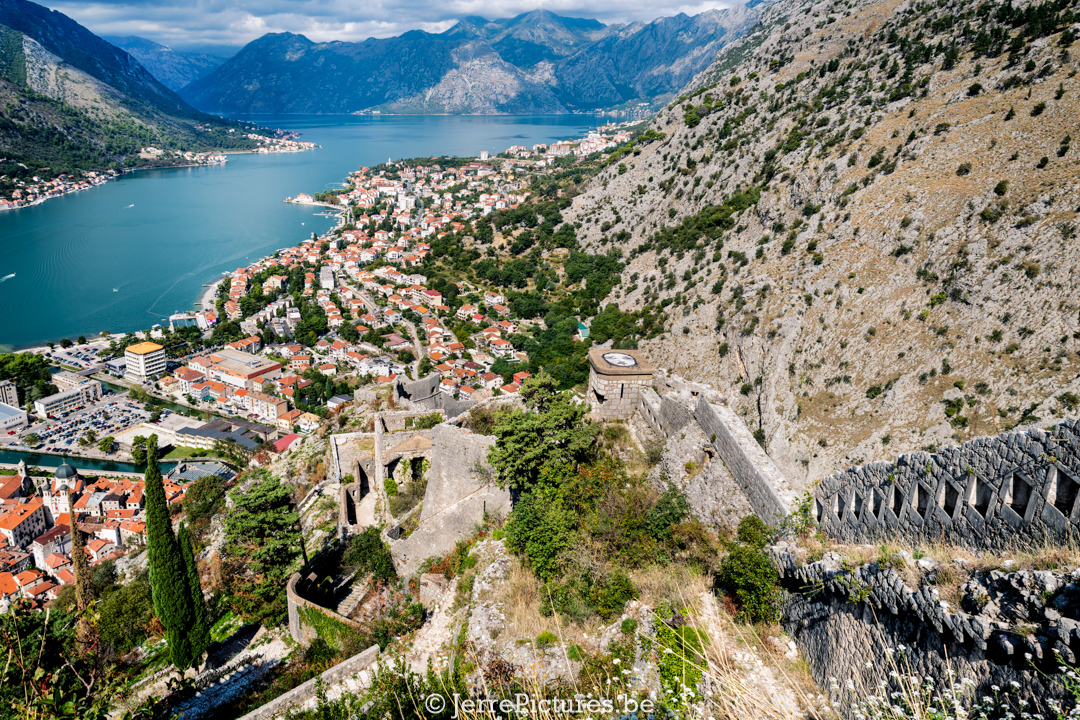 The walls of Kotor climb steadily to an elevation of 280 m, and the fortification physically separates uptown from the part of the fortification reserved for the military only. Some parts of the walls are even 20 m high, and the width of the walls is between 2 and 16 meters.
The walls of Kotor climb steadily to an elevation of 280 m, and the fortification physically separates uptown from the part of the fortification reserved for the military only. Some parts of the walls are even 20 m high, and the width of the walls is between 2 and 16 meters.
The upper rampart contains tree entries in the city – Sea Gate, River Gate, and Gurdic Gate. By nightfall, the gates would close and it was impossible to enter the town. At the top of the hill, within the city walls, there is a door that leads to Spiljari village, just like the Gurdic gate as well.
Within the walls on the hill, there are about 40 positions, shelters, and water tanks, as well as small barracks, towers, watchtowers, and ammunition depots – in fact, everything that was needed by the soldiers who stayed upstairs.
There used to be four churches on the hill itself – St. Roko, ‘Our Lady of Health’, St. Stephen, and the walls of Kotor as the protection of the city
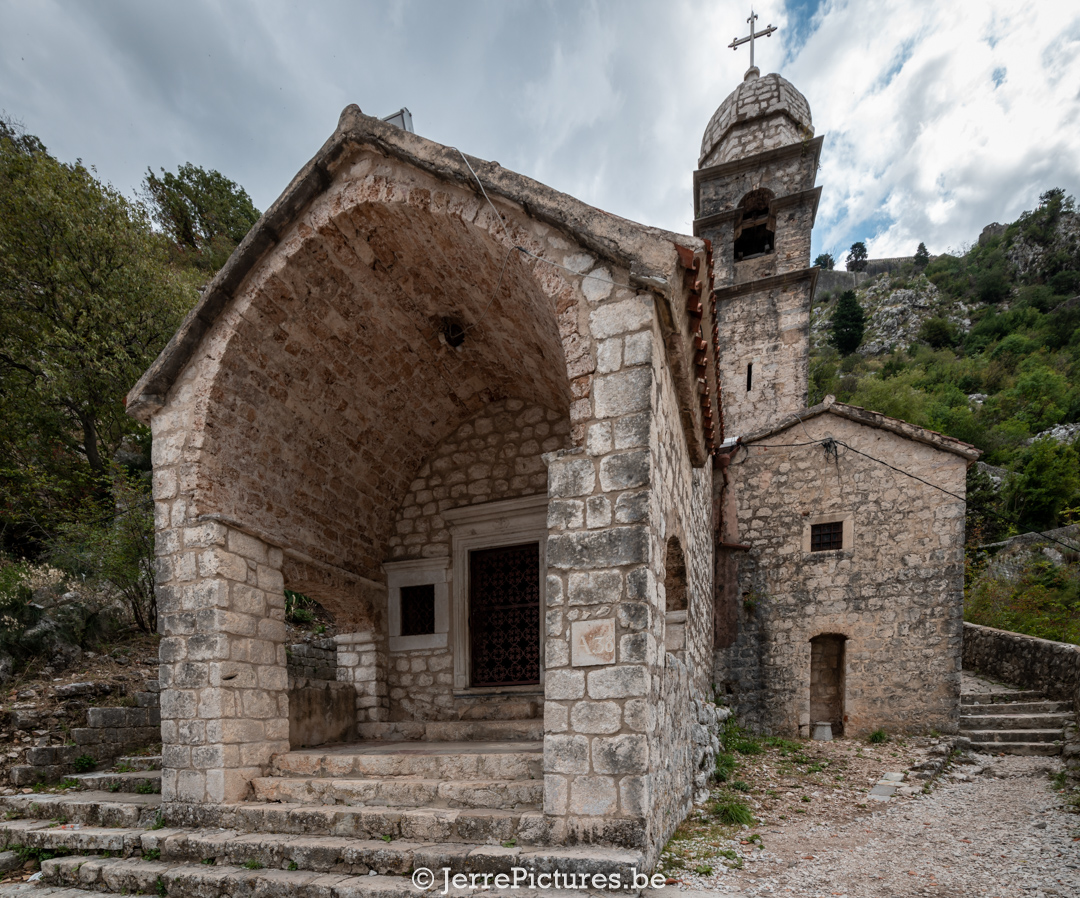
the value of this cultural and historical monument, which is on a special UNESCO list of Venetian fortifications. Aldo in time I m not sure these walls will stay they are in poor condition you will pay 8 euros to visit them but like most places corruption and some employees that put the money in their own pocket, the future will not be certain of these walls. Which is a pity!!
The lower city between the walls is in proper and perfect condition! And you do not have to pay for any entrance over there. Please visit one of the tourist shops in order to keep it like this.
The bastions of Riva, Bembo, Valijer Korner, Gurdic, and the Kampana tower are part of the walls of Kotor that can be easily visited. The promenades connected by the bastions are witnesses of the turbulent events that took place on the sea right in front of the city.
The most fascinating part of Kotor city walls is the one that follows the line of the hill. Along its very edge, there are walls that, together with the cliffs, on which they lean, practically prevent any access to the city.
The fortification complex with the tower at the top and the ramparts around it developed gradually. Special articles of the Medieval Statute of Kotor defined who and in which manner would maintain the walls.
Ladder of Kotor and the archaic St John fortress defender
It is relatively easy to reach the fort of San Giovanni. The main entrance to the city walls of Kotor is located north of the city. A good mood, a summer morning, or a winter afternoon are an ideal setup to climb stairs that have more than 1400 steps. If you climb these stairs, you will discover why it was so important to bring some water and not just a small bottle. I’m talking about 2 liters for one person, even in October… People with asthma and heart problems… please do not climb these stairs.
The number of steps can seem intimidating, but at the first resting point, called Sveti Roko, you will have the chance to catch your breath and enjoy the view of the city. Once you see this panorama, you will want to get to the top as quickly as possible because the view will be even more beautiful.
But now I would like to mention that there is an alternative route that is even more beautiful (and it’s free!)
Before continuing the climb, your attention will be drawn to a path along the cross walls that leads to a small square in the city known as Škaljarska Place.
A few cypresses, the scent of iris, almond, and laurel will accompany your adventure. You will stop, look up, and see the passing chapels and the Church of Our Lady of Health. Here, you will have a wonderful view of the city. If you take a photo, you can use one of the thousand gunports in the walls as a unique frame. I thought it was too cliché, but now I regret not doing it!
Small narrow rectangular openings can be seen along the length of the walls, so you can imagine how it was for soldiers – defenders of the city to see a sailboat rocking on the sea or enemies coming over the slopes of Lovćen. (Or is it just me? Because of my military history…)
With some luck, you will encounter the resident of these walls when climbing to the fort – the Clausilia catharsis, an endemic species of slug.
Fort of San Giovanni
The fort or Kashtio, as the people of Kotor call it, had everything necessary to operate independently. The entrance was regulated with a chain bridge that is still in use. The chapel of St. John (San Giovanni), after which the hill and the fort are named, is still part of the fort.
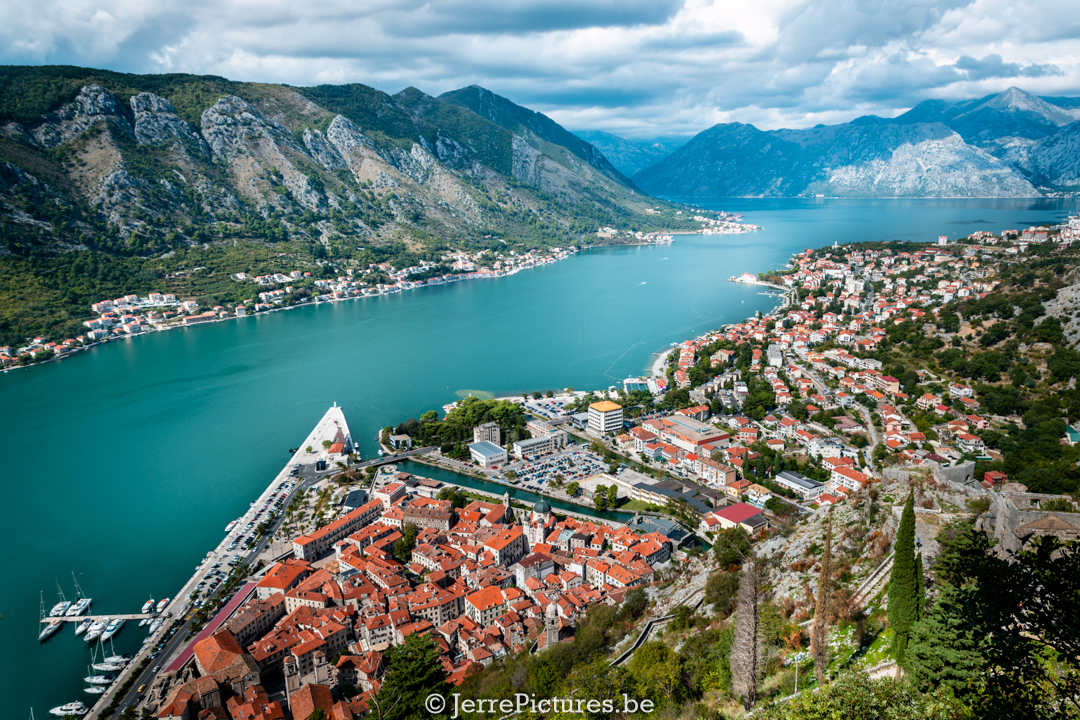
The view from 280 m above sea level is impressive – here you can see Kotor and the bay in all its glory. On the other side of the valley is the abandoned village of Špiljari.
The impressive medieval fortification skills are the reason for the growing number of visitors and enthusiasts who want to discover all the secrets of the walls of Kotor and the fortress of San Giovanni. For those in good shape, the climb will take about 40 minutes – for those looking for the ultimate picture, it will take a little longer. But hey I told you about an alternative road.. that will provide you with even more breathtaking landscapes (my personal opinion)
Spiljari and the old road
The view to the East from the Kotor fortress San Giovanni takes us to another world – far in those ancient times when, in the valley behind the hill, hidden from view lived the inhabitants of the oldest village in the Bay of Kotor.
There used to be about twenty inhabited houses in the village of Špiljari, but during the Second World War, by order of the occupation authorities, everything was evicted.
Today we can see only the foundations of long-abandoned homes, where fruit and vegetables were once grown. It is still possible to see the Church of St. George dominating the small abandoned village like it is still secretly waiting for the return of old families. There are frequent visitors who, coming to this abounded village, enjoy peace, dreaming about the life that was once present there. which, however, is only an escape from our hectic lives…
The Spiljari can be reached by the old serpentine road, which was built in 1884 on the site of the old route of the road, which is much older. This old road led from Njeguš through Krsac, beside Špiljar, for which a special path separated, all the way to the plateau next to the river Škurda where Crnogorski Market was located once.
At that market, Montenegrins sold their products to the people of Kotor. Their entry into the city used to be possible only with a special permit, only during the day with the obligatory of dumping the weapons before entering the city. The village of Špiljari, historically speaking, was the connection of Kotor with the hinterland.